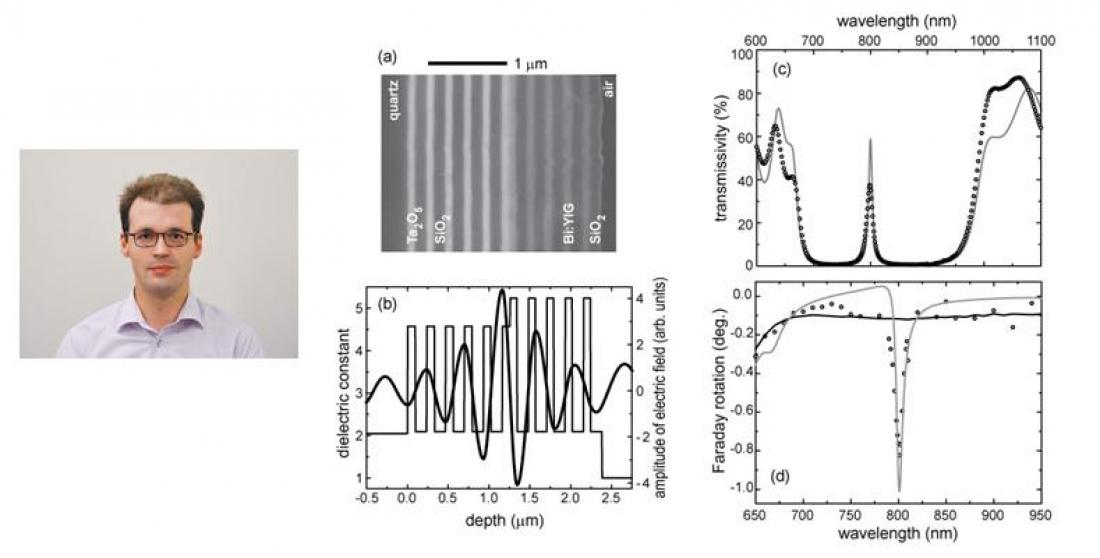Dr Baryshev and Fig.1. (a) SEM image of a magnetophotonic crystal, the system of two adjoining multilayers. (b) Sketch of the spatial distribution of dielectric constants and the in-sample distribution of the electric field amplitude for the resonant wavelength. (c), (d) Experimental (circles) and calculated (gray solid line) spectra of the magnetophotonic crystal. Faraday rotation of the garnet/SiO2 multilayer, the reference sample, is shown by black solid line in plot (d).
Magnetophotonic crystals are artificial media that provide efficient coupling of light to their magnetic constituents. Light confinement inside magnetophotonic crystals results in a large enhancement of their magneto-optical response, which is a promising property for optical applications such as isolators, circulators and modulators.
Here, using state of the art microfabrication technology to create periodic structures with high accuracy, Alexander Baryshev and colleagues at Electronics-Inspired Interdisciplinary Research Institute (EIIRIS) report the existence of so-called optical surface (Tamm) states at the interfaces of magnetophotonic crystals.
Structures with different designs were fabricated by sputtering where the periodicity of magnetophotonic crystals was terminated by another medium: a material with a negative permittivity or a photonic crystal.
The researchers demonstrated that the tailoring interfaces of magnetophotonic crystals can produce conditions for the existence of Tamm states, where the manifestation of the states was seen as resonant peaks in transmission and Faraday rotation spectra of the crystals (Fig.1).
This novel media shows potential for magnetotunable filters and localizing light within any active material used as the constituent layers of photonic structures.
For references, please click on the Toyohashi Tech eNewsletter link below



